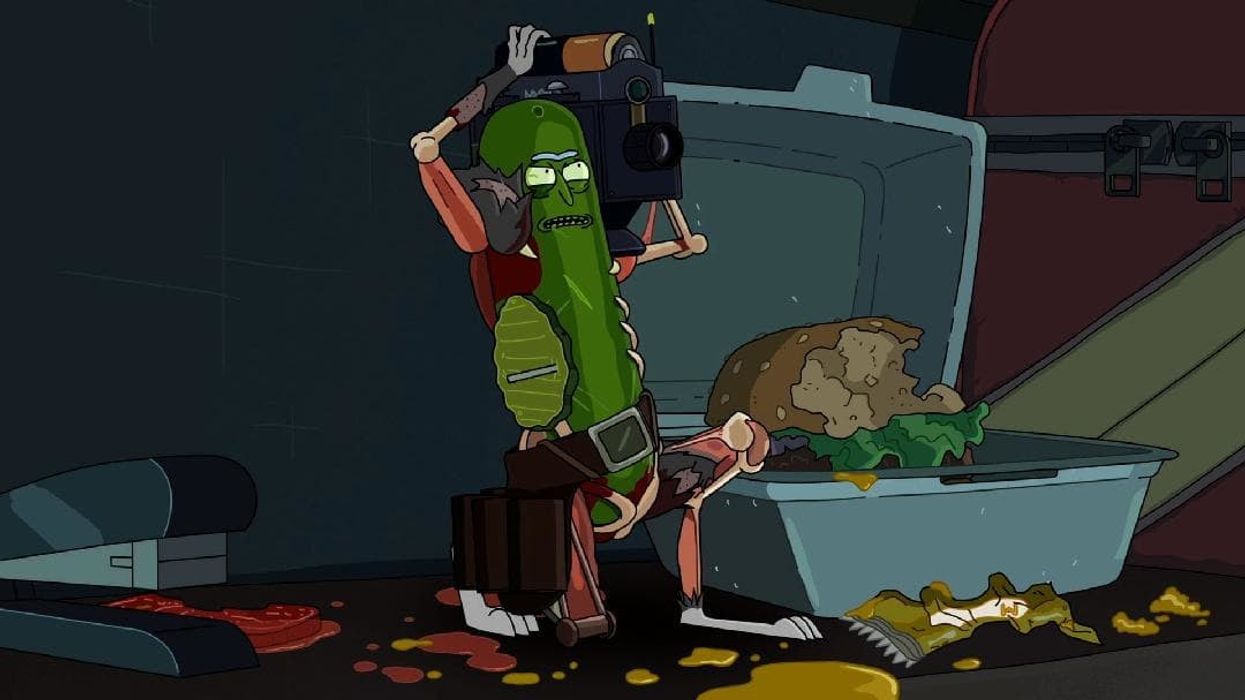What 'Pickle Rick' Can Teach Us About Character Goals and Obstacles
Drama is watching a character overcome obstacles to achieve a goal. Even if that character is a pickle.

'Rick and Morty'
Since its inception, Rick and Morty has always been at the forefront of storytelling in television. Its storylines often challenge preconceived notions about humanity, empathy, and structure. Frequently we're asked to think outside the box, and we're always taken on an insane ride via the animation. No episode is a better conduit of Rick and Morty than the Pickle Rick episode. And that's why I was so pleased to see it get the Emmy for Outstanding Animated Program it deserved this past September.
We've covered the writing of Rick and Morty before, and I love our post on the truth bombs Justin Roiland, and Dan Harmon espouses about screenwriting.
But as I come back to the Pickle Rick episode, I keep thinking about how all 22 minutes of it are a perfect screenwriting lesson on a character with goals and obstacles.
Oh, and it created the most rabid fandom on the internet.
Let's dig into the episode and see what we can learn.
Obstacles in Screenplays
As the adage goes, no one wants to read a screenplay about the village of happy people. You need conflict to create drama. We often think about conflicts as internal or external. But you need both working in tandem to create a real meal for the audience.
Obstacles and conflict can be fun to create, but you need to always be thinking of interesting ways to get your characters in and out of these situations.
That's where the genius of Pickle Rick truly shines.

Obstacles in "Pickle Rick"
Let's look at the brief episode summary from Wikipedia to get our minds right, "Pickle Rick is the third episode of the third season of the Adult Swim animated television series Rick and Morty. Written by Jessica Gao and directed by Anthony Chun, the episode premiered on August 6, 2017. In "Pickle Rick," Rick turns himself into a pickle to avoid family therapy, but Beth confiscates his antidote and the others go to therapy. Meanwhile, Rick falls into a sewer and constructs mechanisms from dead animals to survive. He escapes into a highly secure building, where he kills the agents inside in order to leave. He goes to the therapy session and later receives the antidote syringe from Beth."
Our friends at Film Crux created a fun video talking about the obstacles within the episode and how it teaches important screenwriting lessons.
The one thing I want to make sure hits home is that something is ALWAYS going wrong inside the episode. No matter how many wins Rick has, the next beat always undercuts the audience. We never get time to take a breath. First, he's a pickle, then he's burning to death, then he's got water, but it takes him into the sewer, then he defeats a cockroach and can walk, but the rats come...and so on.
This all may sound coincidental, but coincidences are great in storytelling as long as they get your character into trouble.
Look at how random it is that Rick winds up in an advanced laboratory. It should be how he saves himself, but instead, it gets him into worse trouble than before. It also forces the writer to get more and more creative as shit hits the fan. There are several moments where we cannot possibly fathom how Rick can get out of this situation.
And then the audience is surprised by a logical assessment of the obstacle and we sell the belief of surmounting each obstacle by building on the obstacle that came before it.
Rick's obstacles start small and then gradually get more and more insane. Even in a show like Rick and Morty, things get weird, but because we're gradually building toward the violence and humanity happens in the lab, we're completely along for the ride.
Think about Die Hard. The same thing happens there. First, it's personal problems with McClane. Then it's not having shoes. All the way to bleeding profusely and needing to save your wife from a psychotic Alan Rickman.
Use your obstacles to build toward the insane set pieces with smaller obstacles along the way. Make sure there's a problem in every scene. Otherwise, there will be no drama.
If you want to learn more about the Pickle Rick episode, check out this behind the scenes video where the Rick and Morty team talk about the idea and the writing of the episode.
Summing Up Screenplay Obstacles in Pickle Rick
What other screenwriting lessons have you learned from Rick and Morty?
How do you get creative with characters and their obstacles?
Let us know in the comments below.











